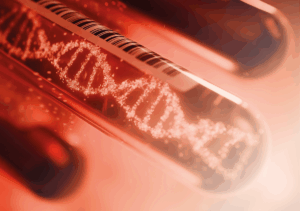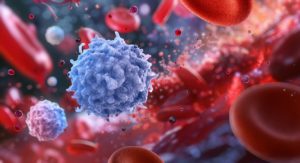Thanks to modern sequencing protocols, diagnosing a genetic disease can be done in a cheap and easy way. Unfortunately, as we have seen with Cystic Fibrosis in a previous article, this very first and essential medical step of diagnosis might turn out especially difficult. Suspicious genetic variants able to cause a certain disease might count in the thousands; with possible development-dependent expression and unpredictable cross-talk effects. This complexity is further reinforced by our still incomplete knowledge of the function of every human gene, and by the difficulty in quantifying symptoms in a comparable manner between cases.
In this difficult context, we highlight this month the work of Ludovico Graziani and his colleagues from the University of Rome. The group used our ClinEx pro technology to study the case of a little girl likely suffering from a rare genetic disease called Baraitser-Winter syndrome (BRWS).
The girl was undergoing various and dispersed symptoms such as psychomotor defects (retarded independent walk, inability to articulate elaborate speeches), mild craniofacial dysmorphia (round and flat face, above average eye spacing) and other affections like overweight, short size and mild hearing impairment.
Sequencing revealed a heterozygous substitution (change of an amino acid for another) in the ACTG1 gene. ACTG1 codes for γ-actin, a common structural protein central in intracellular cell trafficking and cytoskeleton maintenance in various cells. Mutations in ACTG1 were already linked to hearing defects in children but the detected mutation (Arg206Gln) had not been previously linked to BRWS. We could hypothesize that the wide expression of γ-actin across different cell types might explain why the symptoms affected various body parts and physiological functions. But strangely enough, the mutation does not seem to have any structural effect on the mutated protein, as revealed by in silico simulations. Thus, at the moment of publication, no pathogenic mechanism at the molecular level (for example a loss-of-function change in γ-actin structure) could be linked to the observed phenotypes.
This triple example of complex symptomatic expression, unreported BRWS-linked mutation and unclear repercussion of the mutation highlights the difficulty in proposing a relevant diagnosis in such undetermined cases.
The researchers then review other publications to compare the symptoms of their patient with other documented clinical cases. The very large spectrum of manifestations, both in terms of diversity and severity, include some of the features she presents. But what emerges from this analysis is mostly that so-called formes frustes expression (atypical or attenuated manifestation of a condition), is to be considered the norm, as even afflicted members of the same family might present different phenotypes.
These observations challenge the straightforward but rigid classification of BRWS1 (caused by mutations in the β-actin gene ACTB) and BRWS2 (caused by ACTG1). BRWS2 patients generally present numerous different symptoms and because of this hypervariability in the observed symptoms its nosology (science of diseases classification) is a challenging medical issue.
We at 4bases thank Dr. Graziani’ and his colleagues for their work and confidence in using a 4bases product. We hope our diagnostic solutions will continue to facilitate medical research in the future in the domain of rare diseases screening.
Graziani, L., Cinnirella, G., Ferradini, V., Conte, C., Bascio, F. L., Bengala, M., Sangiuolo, F., & Novelli, G. (2023). A likely pathogenic ACTG1 variant in a child showing partial phenotypic overlap with Baraitser-Winter syndrome. American Journal of Medical Genetics Part A, 1–5. doi.org/10.1002/ajmg.a.63157





